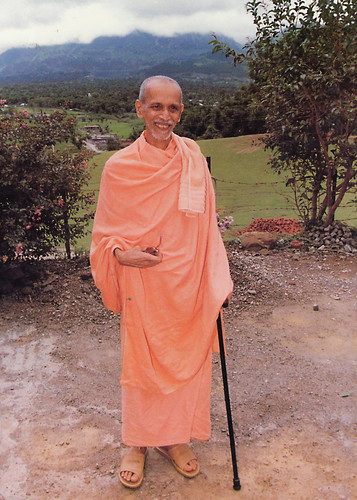The real yogis get right to the point

"That which stands between the individual soul and the universal soul is the ego."
-Swami Chidananda
Read more here.
"When you begin to question your dream, awakening will not be far away." -Sri Nisargadatta Maharaj



In the Room with Thupten Jinpa, the Dalai Lama's English Translator from onBeing on Vimeo.

When I asked what makes a good teacher, he said. "Gray hair. Experience makes a good teacher. Guruji was always repeating that yoga is 99 percent practice, one percent theory. You can read hundreds and hundreds of books, but it does not make you a good teacher. You have knowledge from your life and your body, and then you can teach.
"Instead of wanting to be students, people want to be teachers right away. I am against it. This is not a job. This is a passion. Tradition is important. Whatever my guru taught me, I am teaching you.
"He taught me how to act, how to be with people. How many people had the chance to speak with our guru, eat with our teacher, live with our teacher? Otherwise it becomes 'Bla bla bla.'
"Everything I know, my guru taught me."
When asked what makes a good student, he said, "Constant determination towards the practice, and being with the teacher. The teacher will take care of the student. How can you be a student without a teacher, if you practice on your own all the time?
"The student must respect the teacher all the time, and listen to what the teacher says."







 The Port for Prayer is a special place that has been absorbing spiritual vibrations since the Franciscan Sisters founded it back in the 1880s. It is surrounded by St. Francis Woods and is super-shanti (peaceful).
The Port for Prayer is a special place that has been absorbing spiritual vibrations since the Franciscan Sisters founded it back in the 1880s. It is surrounded by St. Francis Woods and is super-shanti (peaceful).








 There was a new student in class today. I asked her name and she said Deepa, which means "light." Before I could edit myself, the mouth said, "Happy Diwali!" with great enthusiasm.
There was a new student in class today. I asked her name and she said Deepa, which means "light." Before I could edit myself, the mouth said, "Happy Diwali!" with great enthusiasm.


The word “ballot” comes from the Italian ballotta, or little ball, and a ballot often was a ball, or at least something ballish, like a pea or a pebble, or, not uncommonly, a bullet. Colonial Pennsylvanians commonly voted by tossing beans into a hat. Paper voting wasn’t meant to conceal anyone’s vote; it was just easier than counting beans. Our forebears considered casting a “secret ballot” cowardly, underhanded, and despicable; as one South Carolinian put it, voting secretly would “destroy that noble generous openness that is characteristick of an Englishman.”
